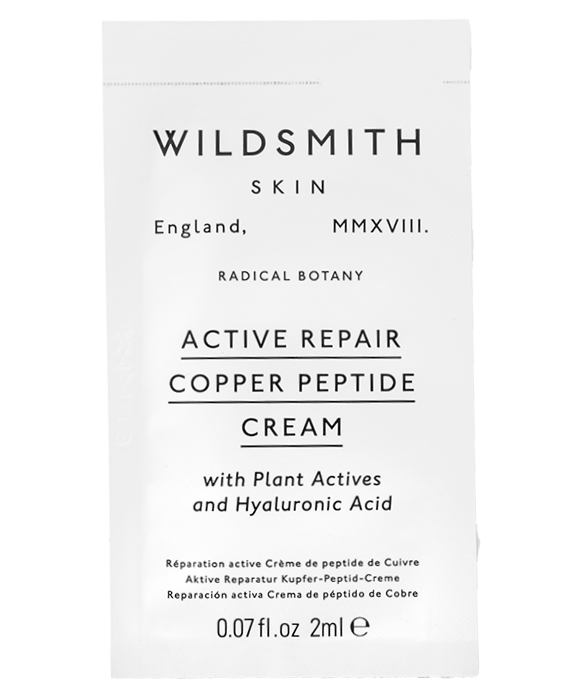Writer and gardening enthusiast Tom Loxleyon why we need to embrace biodiversity and start cultivating a healthier planet for all of us to live in – including the pests…
As a boy I ran wild in my father’s garden, chasing balls, climbing trees, riding bikes, all day every day in the school holidays and deep into long summer evenings. The only time I wasn’t allowed out was when it was time to spray, when the air would turn heavy with the smell of insecticide and fertiliser. On those days my mother would lock me and my brothers inside, well away from our father’s bottles plastered with piratical skull and crossbones on labels detailing grim warnings and grisly consequences.
My father loved his garden. But he guarded it with a zealous eye, a vacuum pump and a vat of highly-toxic chemicals. This being the 1970s, everything got sprayed: a vegetable patch with serried ranks of cabbages and leeks, raspberries on canes, gooseberries under seas of nylon nets, banks of prehistoric-looking rhubarb, the obligatory rose bed, apples for cooking and eating, beans entwined on bamboo tripods, lavender for fragrance and mint for herbs. Even the lawn was dosed with weedkiller. The only patch to escape was the bosky corner where my father kept his hives, bees being just about the only insects he allowed to visit his crops without risking toxic retribution.
Forty years on no modern gardener would get away with unleashing such mayhem, at least not without raising eyebrows over the garden fence. Because we are living on the verge of a crisis caused, in part, by over use of modern chemicals. As a global scientific review published in February puts it, insects could vanish within a century at the current rate of decline, threatening a “catastrophic collapse of nature’s ecosystems”.
Where once the absence of insects would have been greeted as good news, we now recognise it spells disaster. But my father was only following the example of commercial growers and agri-business farmers for whom chemicals were key to turning British farms into some of the most efficient in the world. But at a price.
“Our understanding has moved on,” says Jane Scotter who has devoted the last 20 years to pioneering cultivating vegetables, fruit and flowers without the use of chemicals at Fern Verrow, her 16-acre biodynamic farm in Herefordshire. “Chemicals were exciting in the 1970s. Post-war everybody embraced them because it was the new age of technology. You can see the allure. How tempting it must have been to go out and spray your roses because then you didn’t have to pick off the greenfly or lose your beautiful buds. But we forgot to stop and think is it a good thing to do? If we had known what was going to happen would we ever have started it?”

One of the gardens at Fern Verrow, a 16-acre biodynamic farm in Herefordshire.
Which is a good question. According to the report – published in the journal Biological Conservation and based on 73 national studies from around the world – the UK has suffered the biggest recorded insect fall of all, which is bad news not just for our insects but for our many birds, reptiles, amphibians and fish that eat them. And, by extension, for us. Insects are essential for functioning ecosystems, as food for other creatures, recyclers of nutrients and pollinators. Without pollinators there is no fertilisation, with no fertilisation there are no flowers and fruit, without flowers and fruit there are no plants, without plants there is no pollen… You don’t need to be a gardener to know this spells disaster. And the omens are not good. The number of widespread butterfly species fell by 58 per cent in England between 2000 and 2009. Bees have been in decline for years. When did you last see a hedgehog?
But we can all do our bit to tip the scales back. The answer to increasing the health and productivity of your garden – and of your neighbour’s garden and indeed of the neighbourhood – is to increase the number of species living in it. This is biodiversity. For gardeners it means abandoning areas of the garden to grow wild, leaving piles of leaves and logs, letting straggling buddleia bolt skywards to bring in the butterflies, planting nasturtiums next to your cabbages to lure away the caterpillars and marigolds next to your roses to attract the aphids. And weeding everything by hand.

Allowing areas of the garden to grow wild is one of the key principles of biodynamic gardening
“We weed a lot by hand,” says Scotter, who provides the vegetables and flowers for the chef Skye Gyngell’s restaurants and acts as a consultant to the gardens and farm at Heckfield Place, a handsome Georgian manor house that is now a hotel set in 400 acres of the Hampshire countryside. At Heckfield there is a commitment to biodiversity that goes hand in glove with a determination to use biodynamics to make the soil glow in the farm, kitchen gardens and orchard in order to feed the hotel’s restaurant with high-quality produce.

Part of the grounds at Heckfield Place, where Jane Scotter is a consultant
As Scotter knows, biodynamics involves a lot of back-breaking work, as you might imagine when you have 16 acres to weed. “But people who weed a row of carrots and enjoy what they are doing have something to show for that at the end,” she says. “The love shines through with that crop.” Does she fertilise? “Not with nitrogen, no. If things are grown in really beautiful soil that has had compost and manure added to it in layers over a long period of time, the result is very different to the quick fix of a chemical shot in the arm. Look at the lettuces that we grow outside and you’ll see a lovely dark greenness to them. If they are rushed on and grown in nitrogen-enhanced soils, they tend to be very light green and they don’t taste half as good. The proof is in the results. Not just in the flavour of the produce, but the beauty of it. It is there in the deep green colour.”
How does she cope with pests? “We don’t spray anything, not even carrots that commercially are routinely sprayed for carrot fly. We pull slugs off the plants in the greenhouses. You have to be prepared to lose a bit. If you have a terrible slug problem one year it won’t necessarily be so the next. That is being biodiverse.”
Scoter’s experience is just as applicable to a garden. What would she say to the biodynamic beginner? “Grow a little bit of everything. We grow 150 different varieties and all the flowers for Skye’s restaurant. Make your own compost, build up your soil and never be tempted by slug pellets. Just put your boots on and go out there and do it. It’s very therapeutic.”

Jane recommends budding biodynamic gardeners start with ‘a little bit of everything’
Which, in many ways, would have been music to my father’s ears, who may have been a man of his time when it came to napalming his garden with chemicals, but he was way ahead of the curve on composting. His mantra to anyone who would listen was: “Everything that’s lived can live again in a plant.” He was talking about the potato peelings but it’s not a bad guiding principle to everything we do. Because all life is connected. “It’s about returning to the soil,” agrees Scotter. “We all do, in one shape or form. We all die to bring new life.”
Three simple ways to bring more biodiversity into your life
- Make your own compost – If you’re making lazy compost, you don’t turn it. Which is the good news. The bad news is it will take about two years to rot down. If you can turn it often, it will rot down much more quickly as the microorganisms that do the work will get more oxygen. But everyone has to start somewhere, so first up, choose a compost bin. Don’t fancy a green Dalek at the bottom of your garden? Then drill holes in the bottom of a black dustbin instead. Or better still, if you have the space, make one out of three wooden pallets – then cover with bin bags. Start by throwing in your kitchen waste and garden cuttings. Layers are key. First green and then brown stuff, then green, then brown, etc. Green stuff includes: vegetable peelings, the decayed mush in the bottom of your salad drawer, teabags, coffee grounds, even orange peel and mown grass. Don’t put in meat or fish. They will rot but you don’t want to attract vermin. Brown stuff includes prunings – chopped or shredded as small as possible – cardboard and newspapers torn up. Avoid glossy magazine pages or plastic-covered cardboard. Water it if it looks dry and has stopped decaying. But keep it covered – you don’t want all that goodness washed away by rain. You’ll know it’s ready to use when it doesn’t really smell of anything and the ingredients are unrecognisable – the compost should resemble an un-iced chocolate cake that a three-year-old has smashed to bits with a blunt instrument. Spread onto bare soil or around existing plants – you can let the worms stir it into the soil or fork it in yourself.
- Use chemical-free weed control – Once you’ve decided to go chemical-free there is not much choice but to get down on your hands and knees with a fork and pull the weeds out by hand. An old carving knife is useful for removing deep-rooted weeds by simply digging round them with the blade held upright. For large specimens a mattock is preferred – part axe, part adze. This will enable you to uproot even massive weeds. If you’ve a sea of weeds to deal with smother them. Put layers of cardboard down and ignore them while they die out of sight, then pull up the roots. The cardboard will break down into mulch or you can plant through it if you want. Now you’ve removed the weeds plant densely. Use ground-covering plants such as Lamium, Bergenia, geraniums or Epimedium which will not leave any room for weeds to thrive and spread. Hand-weed any that cheekily pop up as soon as you can and definitely before they produce seeds.
- Plant a hedge – A hedge is not just a hedge, it’s a home for wildlife and a food source for them too. Now is the perfect time to plant a native hedge such as a hawthorn or a blackthorn – if you want something spiky to keep cats away from your wildlife menagerie – or beech or hornbeam if you want to end up with a hedge that keeps its crispy brown leaves throughout winter. You don’t need a massive run for a hedge – you might simply want to hide that compost bin. Order some bare-root ‘whips’ – they look like twigs with a tuft of roots at one end – and clear the ground of weeds and any grass while you wait for them to arrive. Then plant in a zig-zag with about a foot of space in-between, cutting a slit in the soil and pushing in each whip before pressing the soil back around them with your boot. Water steadily through spring and summer and marvel when the first leaves arrive. Within three years you’ll have what is discernably a low hedge. Within five years it will have outperformed any ‘instant’ hedge you might have been tempted to buy.
Tom Loxley is the editor and co-founder of Rakesprogress magazine
If you're looking for products that are safe to the environment the view Wildsmith's range of Serums, Moisturisers and Face-Oils.





